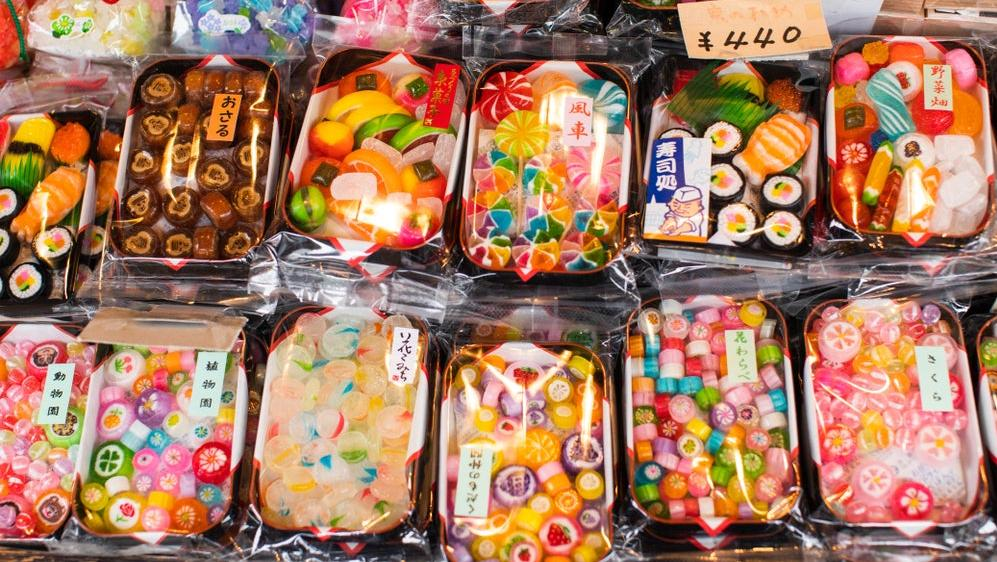Ethnic Grocers Are Redefining Online Shopping
Care to share a family recipe while you shop for groceries?
Ethnic grocery stores—Hispanic, Thai, Indian, Korean, Japanese, Chinese, and Vietnamese ones—have always thrived in a physical environment. Going to an Asian supermarket, for example, is more than just about shopping for groceries. It's about seeing people, running into your friends, colleagues, or neighbors, and stopping for a minute or two to gossip and share life updates. Who's getting married? Who's having a baby? How do you make this soup? This type of spontaneous social interaction is welcomed by many people of Asian descent and is crucial to their overall well-being.
If you don't live near an ethnic grocery store or have no means to get to one, of course, you can always go online. There is a healthy selection of such stores, including Weee, Umamicart, and Quicklly, selling everything from fruits and vegetables to noodles to your favorite sauces and personal care items. The selection is abundant, and with a certain dollar amount purchased, your groceries can be delivered to your home for free.
Unlike H-Mart or 99 Ranch Market, which possess both a physical and online presence, these online-only stores lack the social factor. You can't gossip with your neighbor while picking out produce or tell your friends about a colleague who annoys you. So how can these outlets get shoppers to come back, and how can they approximate that sense of community? The answer: shoppable content.
What is Shoppable Content?
Shoppable content is an e-commerce solution that combines elements of digital content and company products. Think of it as your favorite grocery store showing you how to make certain dishes using products for sale and incentivizing you to interact with other shoppers.
An early adopter of shoppable content was The Fresh Market, a gourmet grocery store based in Greensboro, North Carolina. To make its customers' shopping experience more of a personalized treasure hunt, the brand implemented several e-commerce solutions at the end of 2021. For example, marketing emails sent to customers included recipes and videos, not just lists of available products. At The Fresh Market's website, videos pop up on the homepage that are sort of a cross between Instagram Reels and QVC, with a "Shop Now" button that takes users straight to the relevant items for purchase.
Of course, The Fresh Market isn't the only one testing this approach. Albertsons, a national grocery chain, also began posting a short video series on its website in 2021. H-E-B, a supermarket chain based in San Antonio, Texas also rolled out livestreaming content in 2021, along with Walmart.
Shoppable content aims to benefit both grocers and customers: Shoppers can learn about new products while finding new recipes and meal ideas, while grocers can gather data on customers' shopping habits and personalize accordingly.
Ethnic grocery websites have been picking up on the cues. Here are some creative ways they've managed to get consumers' attention and keep them shopping.
Weee: Become a social flywheel
Weee is a California-based startup that specializes in Asian and Hispanic foods. The company started in 2015 with the goal of being a one-stop shop for ethnic foods. The brand calls this a "social flywheel," a place where people congregate and exchange ideas and recipes that will (hopefully) become viral. The more exposure, the better.
To meet that goal, Weee has focused on user-generated content. On the website and the app, users can check out recommendations, post a video about a product or recipe, get feedback from others, favorite a video or recipe, and even enter contests. Past contests have included themes such as "Lunar New Year" and "2021 Reflections & New Year Celebrations," both of which generated hundreds of posts and, as a result, thousands of likes.
Umamicart: Curated lists and family recipes
For Umamicart, the focus is on curation, recipes, and teaching people how to make simple Asian dishes. Umamicart does this in a variety of ways. On the website, you can find recipes for selected Asian-inspired dishes, including Cantonese Pan-Fried Noodles, Mango Sticky Rice, and Poke Bowl. New recipes are added monthly, which makes it continually interesting and worth visiting for someone who prefers to do their shopping online.
Marketing emails might include a recipe for tteokbokki, a popular Korean dish, and a link to that recipe on the website, plus the option to shop all the ingredients in the recipe. The emails are customized according to align with the season and any appropriate cultural holidays. In addition to recipes, you can also browse Umamicart's curated lists of groceries, such as SE Asian Pantry, East Asian Pantry, and Korean Essentials, the idea being that everything you need is under one roof—or, in this case, one website.
Quicklly: Money for your recipes
Quicklly, the newest online ethnic grocer that started in 2018, specializes in South Asian and Indian foods. In August 2021, it rolled out a program called Quicklly Masterchef to allow users to earn money by submitting their own recipes. Once the recipe is approved, the user earns money every time someone shops the ingredients from the recipe. To fulfill the order, the company uses local grocery partners based on the location of the customer.
To date, there are only 16 recipes, each with several hundred views. The company is now taking a break from its Masterchef program.
"Ultimately, the company is working to build a pipeline for shoppable recipes and content that includes influencers and recipe bloggers," says co-founder Keval Raj. Until then, you can browse what's available, such as this simple Better Butter Chicken recipe and this Shahi Paneer recipe, both of which look delicious and simple. It's still early days, but if readers engage with each other in the comments section about these recipes, the site could start to cultivate the sociable feeling of shopping at an ethnic grocery store.
